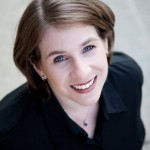 This post is part of our series of Research Roundups — a list of recently published studies on humanism in medicine. If you would like to be notified each time a Research Roundup is published, send an email to bking@gold-foundation.org with the subject line “Subscribe RR”.
This post is part of our series of Research Roundups — a list of recently published studies on humanism in medicine. If you would like to be notified each time a Research Roundup is published, send an email to bking@gold-foundation.org with the subject line “Subscribe RR”.
Effects of biological explanations for mental disorders on clinicians’ empathy
Lebowitz M, Woo-kyoung, A. Proceedings of the National Academy of Sciences of the United States of America. 2014;111(50); 17786-17790.
Researchers tested the differences in mental health clinicians’ empathy for patients whose disorders were explained from a biological standpoint rather than a social one. Conventional wisdom suggests that biological explanations reduce perceived blameworthiness against those with mental disorders, which could increase empathy. Instead, this study found that biological explanations significantly reduced clinicians’ empathy.
Moral distress among healthcare professionals: Report of an institution-wide survey
Whitehead PB, Herbertson RK, Hamric AB, Epstein EG, Fisher JM. J Nurs Scholarsh. 2014 Nov 29.
Researchers examined moral distress across an institution to assess and compare differences among professions and settings. From almost 600 surveys, they found that moral distress was present in all professional groups. Nurses and other professionals involved in direct patient care had significantly higher moral distress than physicians. Watching patient care suffer due to lack of continuity and poor communication were the highest-ranked sources of moral distress for all professional groups.
Using a single item to measure burnout in primary care staff: A psychometric evaluation
Dolan ED, Mohr D, Lempa M, Joos S, Fihn SD, et al. J Gen Intern Med. 2014 Dec 2.
Burnout is most commonly evaluated by the Maslach Burnout Inventory (MBI) which is proprietary and carries licensing fees. In this study researchers surveyed over 5,400 primary care providers and found that a non-proprietary single-item burnout measure used in the Physician Work Life Stud served as a reliable substitute for the MBI Emotional Exhaustion subscale.
Assessing medical students’ and residents’ perceptions of the learning environment: Exploring validity evidence for the interpretation of scores from existing tools
Colbert-Getz JM, Kim S, Goode VH, Shochet RB, Wright SM. Acad Med. 2014 Dec;89(12):1687-93.
In this study authors explored validity evidence for the interpretation of scores from tools designed to assess the learning environment (LE) of health professionals in training. Researchers identified 15 tools that assessed the LE in medical school and 13 that did so in residency. 61% of these tools provided some form of content validity evidence.
Strategies against burnout and anxiety in medical education – Implementation and evaluation of a new course on relaxation techniques (Relacs) for medical students
Wild K, Scholz M, Ropohl A, Bräuer L, Paulsen F, Burger PH. PLoS One. 2014 Dec 17;9(12):e114967.
Researchers developed an elective course for medical students to learn relaxation techniques, then studied the condition of the students before and after the course. Participants showed a significant decline from beginning to end of the course in cognitive and emotional burnout stress and in trait anxiety. They also demonstrated a significant reduction of burnout and anxiety compared to nonparticipants.
A humanistic environment for dental schools: What are dental students experiencing?
Quick KK. J Dent Educ. 2014 Dec;78(12):1629-35.
A Commission on Dental Accreditation (CODA) standard now requires that dental schools commit to establishing a “humanistic culture and learning environment.” Researchers studied students’ perceptions of the dental school environment and found that many students experienced faculty inconsistency, cheating, and belittlement/disrespect. These students also reported experiencing both constructive communication (90%) and destructive communication (32%). Female students reported more gender discrimination and sexual harassment than their male peers, and clinical students reported more experience with belittlement and destructive communication than preclinical students.
APGF Related Publications
The Gold-Hope Tang, MD 2014 Humanism in Medicine Essay Contest: First Place: There’s an App for That
Bradley K. Acad Med. 2014 Dec;89(12):1638-9.
The third place winner in our Gold-Hope Tang MD Humanism in Medicine Essay Contest where medical students responded to the prompt “Using a real life experience, describe how technology played a role, either negatively or positively, in the delivery of humanistic patient care.”

This post was written by Brandy King, Head of Information Services at The Arnold P. Gold Foundation Research Institute


